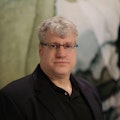The US Geological Survey (USGS) reports that Williston basin’s Bakken and Three Forks formations within Montana and North Dakota include 4.3 billion bbl of unconventional oil and 4.9 tcf of unconventional natural gas. This assessment is for undiscovered, technically recoverable resources and updates a 2013 USGS assessment of Williston basin which found that undiscovered reserves totaled 7.4 billion bbl for Bakken and 6.7 tcf for Three Forks.
Since the 2013 assessment, more than 6,400 additional wells have been drilled in the Bakken formation, and about 4,100 wells have been drilled in the underlying Three Forks formation, resulting in both more production and more knowledge of the basin’s resources. To date, more than 17,500 total wells have been drilled into Bakken and Three Forks formations, and about 4 billion bbl oil have been produced from these units.
The USGS assessment focuses on areas where less drilling has occurred and less is known about potential resources. The USGS quantitatively assessed 15 assessment units (AUs) for undiscovered, technically recoverable continuous oil, gas, and natural gas liquid resources. Assessment unit boundaries were defined based on thermal maturity boundaries, structural features, formation extents and thickness trends, and variability in water saturations.
The assessment also contributes to an ongoing USGS effort to better understand interactions and dependencies between energy resources and water resources. In 2016, USGS published geochemical data from water samples taken during hydraulic fracturing of unconventional oil wells in the Bakken and Three Forks formations, which it updated in the most recent assessment.
About the Author
Alex Procyk
Upstream Editor
Alex Procyk is Upstream Editor at Oil & Gas Journal. He has also served as a principal technical professional at Halliburton and as a completion engineer at ConocoPhillips. He holds a BS in chemistry (1987) from Kent State University and a PhD in chemistry (1992) from Carnegie Mellon University. He is a member of the Society of Petroleum Engineers (SPE).
